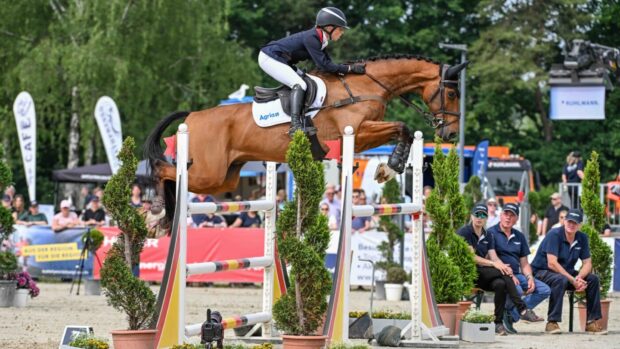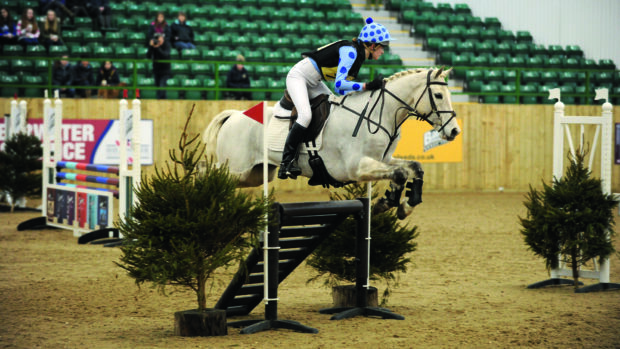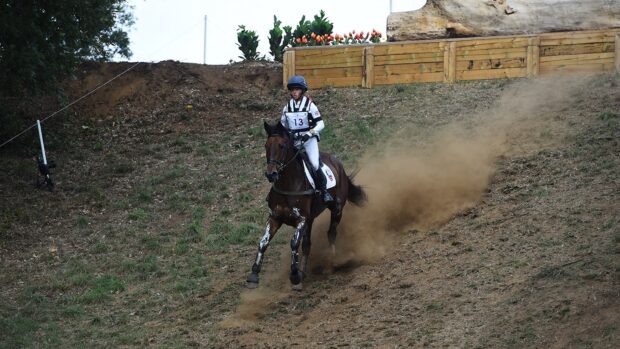Andrew Nicholson and Robbie Power have been riding at the top of their games for many years now. Olympian Andrew has been victorious at both Badminton and Burghley numerous times, while Robbie has wins in the Grand National and Cheltenham Gold Cup under his belt and is also a former showjumper.
The duo of top horsemen combined their expertise during the International Eventing Forum at Hartpury College on 3 February to reveal the essentials for a perfect showjumping round.
Racing vs. showjumping
“The main difference between being a jockey and a showjumper is that in jumping you are working with the same horse every day, you will probably get to ride it six or seven days a week,” says Robbie. “As a jockey, I am riding horses I have never sat on before. Therefore, it is important to ride down to the first fence in a forward rhythm and wait to see what the horse does at the fence — you have to be prepared for anything.
“By the second fence you can relax, but you have to adapt very quickly to different horses and ride as you feel.”
Andrew adds: “Horses are bred and used for different jobs but their way of thinking is the same. As a rider, you have to think on the horse’s wavelength and train him to not only do what you want, but also train him to both his strengths and weaknesses.”
Maintaining rhythm
Both Andrew and Robbie highlight that rhythm is the most important factor in a successful jumping round.
“My father, [former Irish showjumper] Con Power, would always say that in a jump-off, you win over the first three fences, not the last three,” says Robbie. “So it’s all about getting into a good rhythm once you’ve gone through the start.”
It’s similar in eventing, explains Andrew. “A forward rhythm is important, coming out of the start box across country you need to be in the rhythm you want coming into the first fence.”
Staying positive
Riding positively is also crucial in a good jumping round.
“At the start of race, I always make sure I am feeling positive vibes,” says Robbie. “If you’re feeling negative as a rider, that will only pass onto your horse. So heading to the first fence, always ride positively and get away from the fence the other side and get going — if you get a positive start, chances are, you will have a good round.”
Find a strong canter
“Maintaining a good, strong canter is important,” says Andrew. “You should be coming off the bend in a good canter and rhythm, letting the jumps come to you and you need to be looking for a stride from the rhythm you have.
“Sometimes you need to push yourself out of your comfort zone and go for that bigger canter. Across country, coming into a coffin for example, you have to be able to change your horse’s stride pattern without breaking the rhythm.”
Like this? You might also enjoy reading these:
Barrel racing and dressage: why their training techniques are more similar than you might think
Subscribe to Horse & Hound magazine today – and enjoy unlimited website access all year round
Balanced in the saddle
“As a jockey, my job is to have the horse going forward in balance. Coming into fences at 30mph, over three miles, the horse cannot be standing off every fence because that is a waste of energy,” highlights Robbie. “When a horse jumps from a nice even and rhythmical stride, he can remain in his comfort zone.
“It is the same in jumping, the rider has to sit quiet but maintain the forward momentum. The sports are similar in that you are always wanting to get from A to B as fast as possible.”
Would you like to read Horse & Hound’s independent journalism without any adverts? Join Horse & Hound Plus today and you can read all articles on HorseandHound.co.uk completely ad-free.




